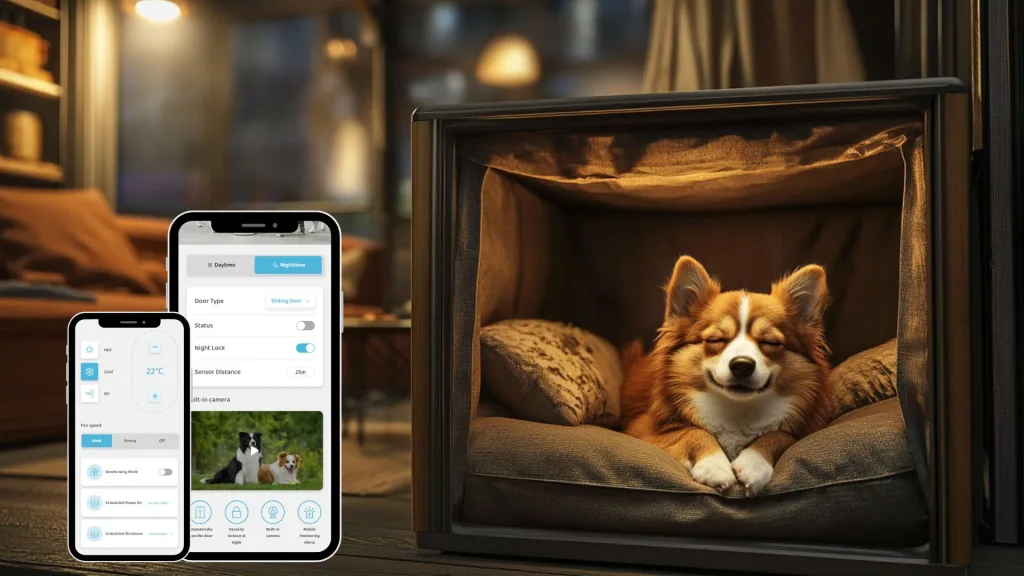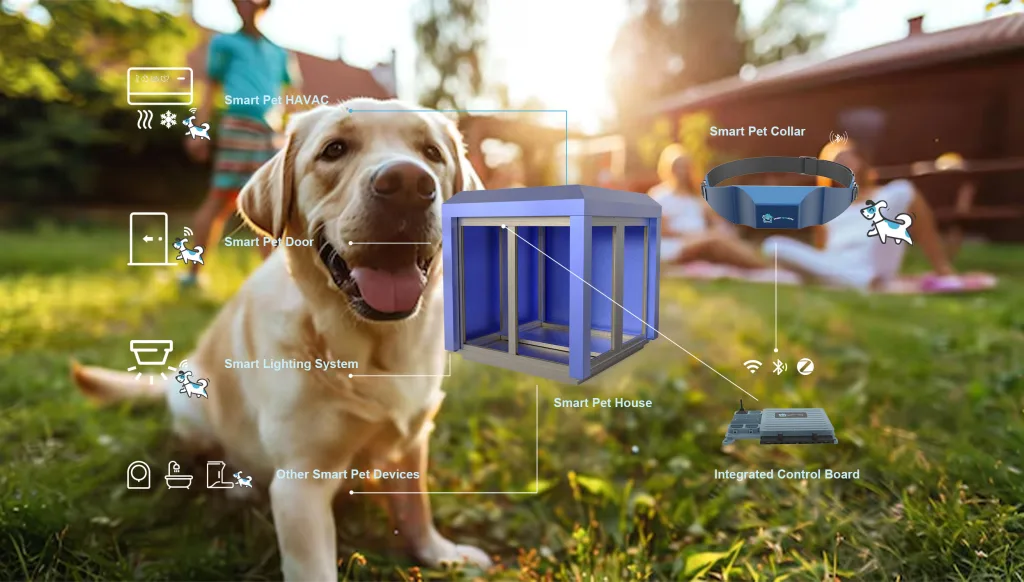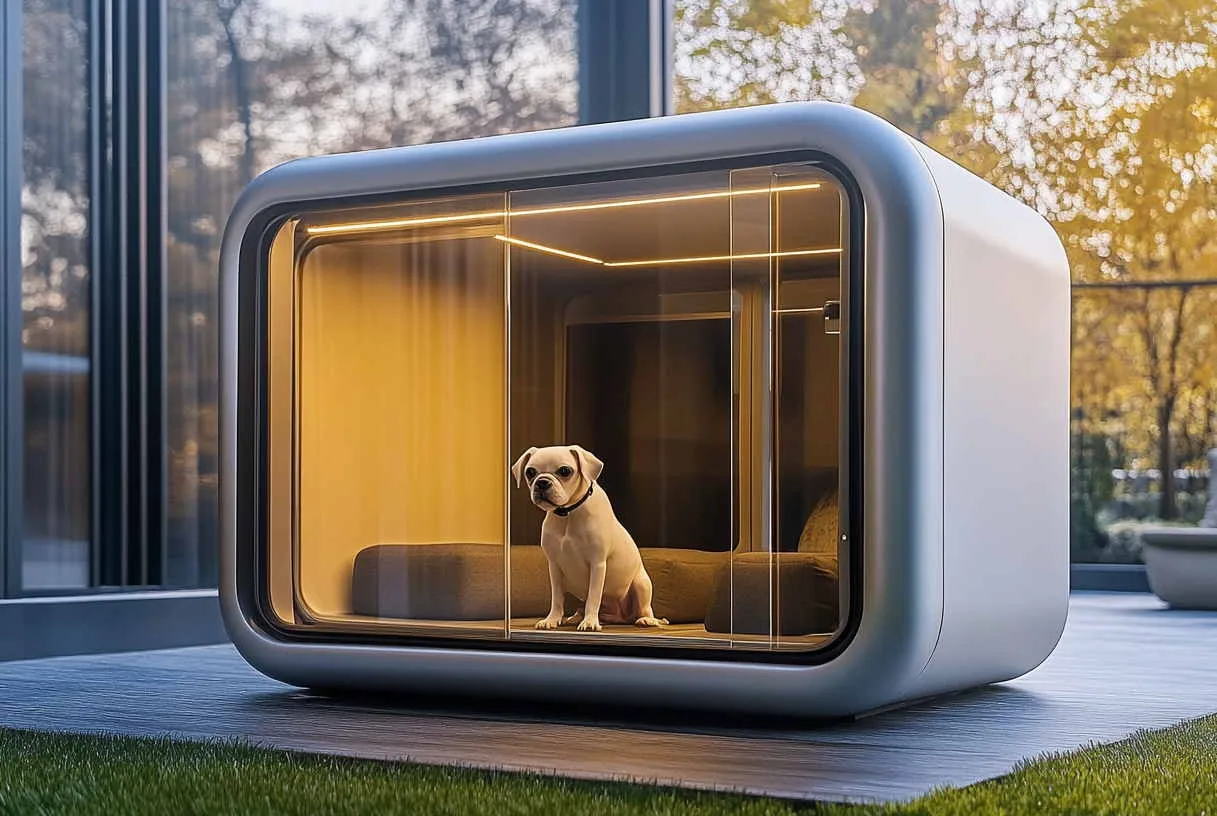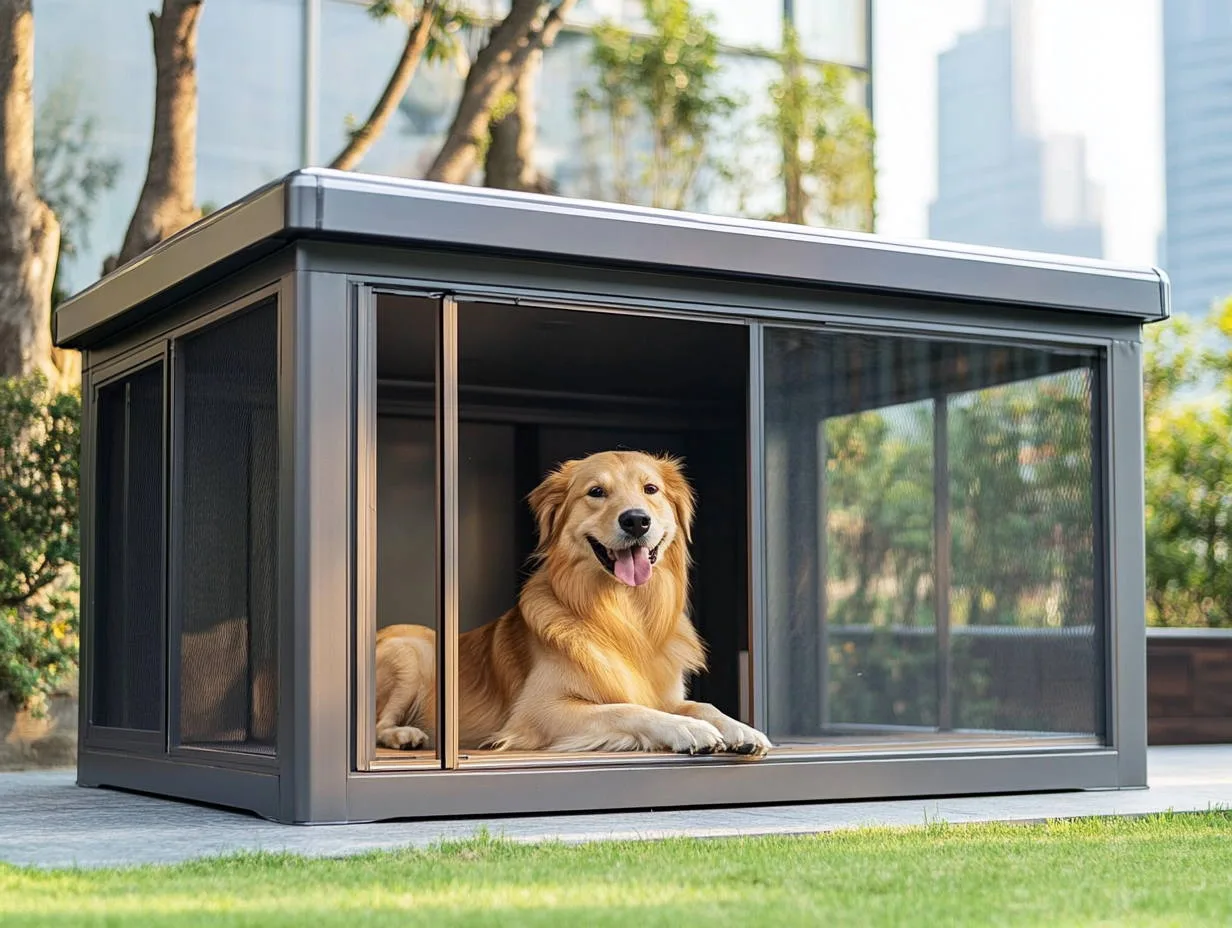SPH
2024.12.05
223
As the pet industry continues to grow, an increasing number of pet owners are focusing on improving the quality of life for their dogs, particularly when it comes to optimizing their sleeping and resting environments. A dog’s sleep behavior directly affects its physical and mental health, and environmental factors such as light, temperature, and noise have been proven to significantly influence sleep quality.We‘ll explore how these elements affect your dog’s rest and how smart dog houses are designed to enhance their comfort.
According to the academic study “How Environmental Conditions Affect Sleep? An Investigation in Domestic Dogs (Canis lupus familiaris)“, environmental factors, including lighting, temperature, and surrounding noise, can alter a dog’s sleep patterns, stress responses, and overall well-being. To address this issue, researchers suggest improving kennel design by constructing accommodations that effectively isolate noise and regulate temperature and light to reduce the negative impact of environmental conditions on dogs’ sleep.
In this context, smart dog houses have emerged as an innovative solution, offering a fresh approach to improving the sleep environment for dogs. With the integration of modern technologies like temperature control systems, noise isolation, and smart lighting adjustments, smart dog houses effectively adapt to environmental changes, enhancing dogs’ sleep quality. This article explores how smart dog houses alleviate environmental factors that affect dogs’ sleep, improving their overall well-being.

Research has shown that temperature plays a significant role in determining the quality of dog sleep. Unlike humans, dogs have a different thermoregulation system and are less adaptable to changes in temperature. In hot or cold environments, dogs may become uncomfortable, leading to disrupted sleep. This is especially true for certain breeds, such as long-haired or short-haired dogs, which are particularly sensitive to temperature fluctuations. In hot weather, dogs may become restless, while in cold weather, they may seek out warmer spots.
Solution: To improve a dog’s sleeping environment, it is important to regulate the temperature appropriately. During summer, the environment should be kept cool with proper ventilation, while in winter, the space should be kept warm and cozy. Temperature regulation helps ensure that dogs have a comfortable resting environment throughout the year.
Light also plays a crucial role in the quality of dog sleep. Dogs’ circadian rhythms are influenced by external light sources, and excessive or irregular light can disrupt their natural sleep patterns. Studies have found that dogs tend to sleep better in dim environments, and bright or fluctuating light may disturb their rest.
Solution: To improve sleep quality, it is essential to minimize bright or disruptive lighting. Soft, ambient lighting should be used in their resting area to mimic natural lighting changes. By adjusting the light intensity or using lighting that simulates natural light, dogs can better maintain their sleep-wake cycles, promoting deeper and more restful sleep.
Noise is another significant factor that can disrupt dog sleep. Street noise, household commotion, and even the barking of other pets can disturb a dog’s rest and cause anxiety. This is particularly problematic for dogs living in urban environments, where external noise is constant.
Solution: Dogs living in noisy environments benefit from soundproofing measures in their resting spaces. Using noise-reducing materials for walls and windows can help minimize external disturbances. Additionally, white noise machines or natural sounds (such as ocean waves or wind) can be used to mask disruptive noises and help dogs remain in deep sleep. Research has shown that white noise can effectively mask sudden noises, promoting a calm and restful sleep environment.
The physical space where a dog sleeps should be spacious and comfortable, allowing them to lie down and stretch without feeling cramped. Overly confined spaces may lead to discomfort and anxiety, affecting sleep quality.
Solution: When designing a dog’s sleeping space, it is important to ensure there is enough room for the dog to stretch, roll over, and move freely. A well-laid-out space that provides different zones for resting, playing, and exploring can help create a calming and secure environment. A comfortable and appropriately sized space is essential to help the dog feel safe and relaxed, which in turn supports better sleep.og’s individual needs, with different zones for resting, playing, and exercising.
The core concept of the SPH Smart Dog House not only focuses on environmental regulation but also emphasizes the interaction between humans and pets through smart technology. This human-pet interaction feature allows owners to better understand their dogs’ needs and provide personalized care. Below are some of the key functions of the smart dog houses:

The smart control system of the SPH Smart Dog House enables pet owners to check on their dogs’ status at any time via a smartphone app and remotely adjust the environmental settings of the dog house. A key feature of this system is the integrated constant temperature ventilation system, which allows owners to adjust parameters such as temperature, humidity, lighting, and air purification to ensure a comfortable resting environment for their dogs. Additionally, the system works in tandem with the SPH smart collar to provide real-time activity tracking, allowing owners to monitor their dogs’ movements and overall health status.
The SPH Smart Dog House is linked with the SPH smart collar, which offers activity monitoring and voice interaction capabilities. Owners can set up the collar to communicate with the dog, providing soothing voice messages to calm anxious dogs. If the system detects anxiety or restlessness in the dog, it sends an alert to the owner. Owners can then interact with their dog through the app, offering reassurance and helping the dog maintain emotional stability.
The smart dog house can also include a health monitoring system that tracks vital data such as heart rate, activity level, and other health metrics. These data points help owners stay informed about their dog’s physical condition and enable them to detect potential health issues early. For example, if a dog shows a sudden decrease in activity, it may indicate a health concern, and the owner can take action promptly via the app.
The SPH Smart Dog House features a smart door control system that allows dogs to freely enter and exit the house while wearing the smart collar. When a dog enters the house, the door automatically closes, creating a soundproof environment that minimizes external noise disruption. Owners can also set the smart door to lock at night to further enhance security. This feature ensures that the dog remains in a quiet environment during sleep, while also preventing it from leaving the house when unsupervised.

Dogs’ sleep quality is affected by various environmental factors, but the SPH Smart Dog House addresses these challenges through intelligent regulation of temperature, lighting, noise, and space layout. Additionally, by utilizing advanced IoT technology, the smart dog house fosters seamless interaction between owners and their pets. Owners can monitor their dogs’ status and remotely control the environment, ensuring that their pets enjoy a comfortable and safe resting place. The SPH Smart Dog House not only improves dogs’ living conditions but also strengthens the bond between owners and their pets, embodying the concept of “smart interaction between humans and pets” while advancing the level of personalized pet care.



